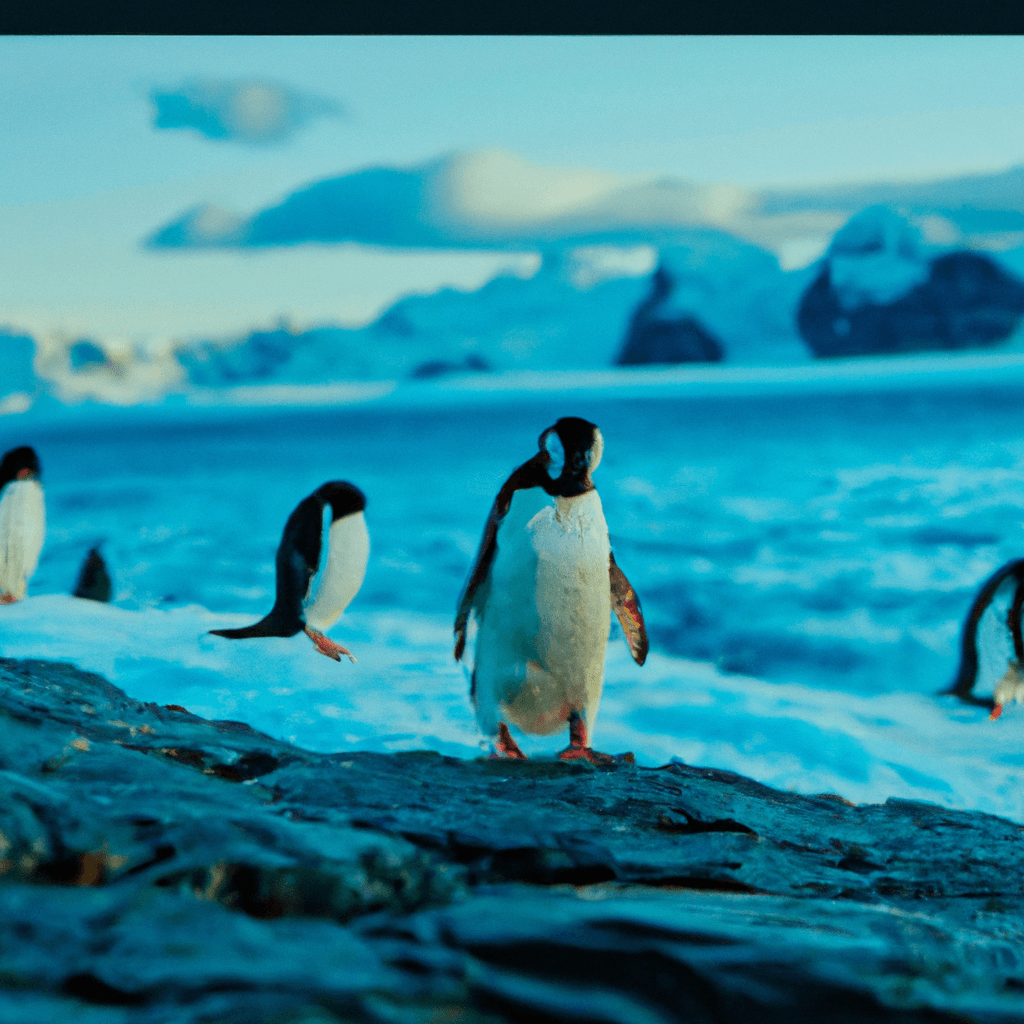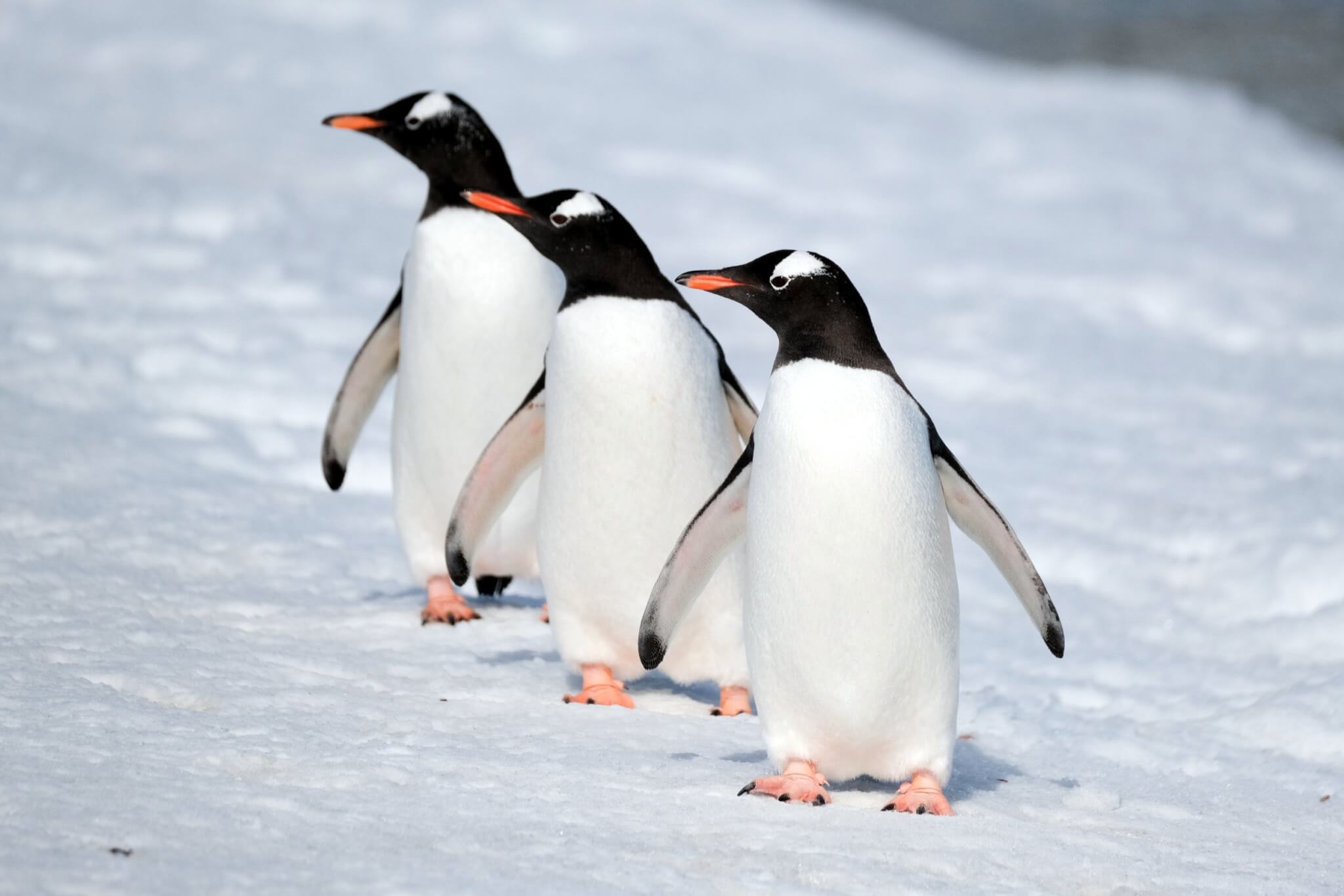I adore Penguins 🐧 and believe most of the world does too.

The Fascinating World of Penguins: A Look at the Different Species and Their Unique Behaviors
Have you ever wondered what it would be like to be a penguin? To waddle around on the ice, to dive into the icy waters, and to live in the coldest places on Earth? Penguins are some of the most fascinating creatures on the planet, and they come in a variety of shapes and sizes. From the tiny little blue penguin to the majestic emperor penguin, each species has its own unique behaviors and adaptations that make them so special.
Let’s take a look at the different species of penguins and explore their fascinating world.
Penguin Species: A Fascinating Exploration of Their World
The smallest of all penguins is the blue penguin, which is found in New Zealand and Australia. These little birds are only about 16 inches tall and weigh just 2 pounds. They are incredibly agile swimmers and can dive up to 200 feet deep in search of food. They also have a unique courtship ritual, where the male will present the female with a pebble as a sign of his affection.

Emperor penguin
The Emperor Penguin
The largest of all penguins is the emperor penguin, which can grow up to 4 feet tall and weigh up to 90 pounds. These majestic birds live in the Antarctic and have adapted to the extreme cold temperatures. They huddle together in large groups to keep warm and can survive in temperatures as low as -76 degrees Fahrenheit. Emperor penguins also have an impressive diving ability, reaching depths of up to 1,800 feet in search of food.

Adélie penguin
The Adélie penguin
The Adélie penguin is another species of penguin that lives in the Antarctic. These birds are smaller than the emperor penguin, but they are still quite impressive. They have a unique courtship ritual where the male will present the female with a pebble, just like the blue penguin. Adélie penguins also have a unique way of communicating with each other, using a variety of vocalizations and body language.
The African penguin is the only species of penguin that lives in Africa. These birds are smaller than the other species, but they are still quite impressive. They have a unique courtship ritual where the male will present the female with a pebble, just like the blue and Adélie penguins. African penguins also have a unique way of communicating with each other, using a variety of vocalizations and body language.

The Galapagos penguin is the only species of penguin that lives in the Galapagos Islands. These birds are smaller than the other species, but they are still quite impressive. They have a unique courtship ritual where the male will present the female with a pebble, just like the blue, Adélie, and African penguins. Galapagos penguins also have a unique way of communicating with each other, using a variety of vocalizations and body language.
Penguins are truly amazing creatures, and they have adapted to some of the harshest environments on Earth. From the tiny blue penguin to the majestic emperor penguin, each species has its own unique behaviors and adaptations that make them so special. So the next time you see a penguin, take a moment to appreciate their fascinating world.
How Penguins Have Adapted to Survive in Extremely Cold Environments
Penguins are some of the most resilient creatures on the planet. They have adapted to survive in some of the coldest environments on Earth, and their ability to thrive in such extreme conditions is truly remarkable.
Penguins have evolved a number of adaptations that help them survive in the cold. They have thick layers of blubber and feathers that insulate them from the cold and keep them warm. They also have a unique circulatory system that helps them regulate their body temperature. Penguins also have webbed feet that help them swim efficiently in the icy waters.
Penguins also have a unique way of huddling together to keep warm. By huddling together, they can create a pocket of warm air that helps them stay warm in the coldest of temperatures.
Penguins are truly amazing creatures. They have adapted to survive in some of the harshest environments on the planet, and their ability to thrive in such extreme conditions is truly inspiring. They are a testament to the power of adaptation and the importance of resilience in the face of adversity.
The Benefits of Penguins to the Ecosystem: How They Help Keep the Balance of Nature
Penguins are amazing creatures that play an important role in the balance of nature. They are a keystone species, meaning that they have a disproportionately large effect on their environment relative to their abundance. Penguins help to keep the balance of nature in a variety of ways.
First, penguins are important predators in the food chain. They feed on a variety of fish, squid, and krill, which helps to keep the populations of these species in check. This helps to maintain the balance of the food web and prevent any one species from becoming too abundant.
Second, penguins are important prey for other animals. They provide a food source for predators such as seals, whales, and sharks. This helps to keep the populations of these predators in check, which in turn helps to keep the populations of their prey species in balance.
Third, penguins help to keep the ocean clean. They eat a variety of fish and other marine life, which helps to keep the ocean free of debris and pollutants. This helps to maintain the health of the ocean and its inhabitants.
Finally, penguins are important indicators of the health of the ocean. They are sensitive to changes in their environment, and if their populations decline, it can be an indication that something is wrong with the ocean. This can help scientists and conservationists to identify and address any problems before they become too severe.
Penguins are amazing creatures that play an important role in the balance of nature. They help to keep the food web in balance, provide a food source for predators, keep the ocean clean, and serve as indicators of the health of the ocean. They are truly amazing animals, and we should all be thankful for their contributions to the ecosystem.





